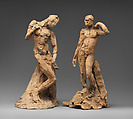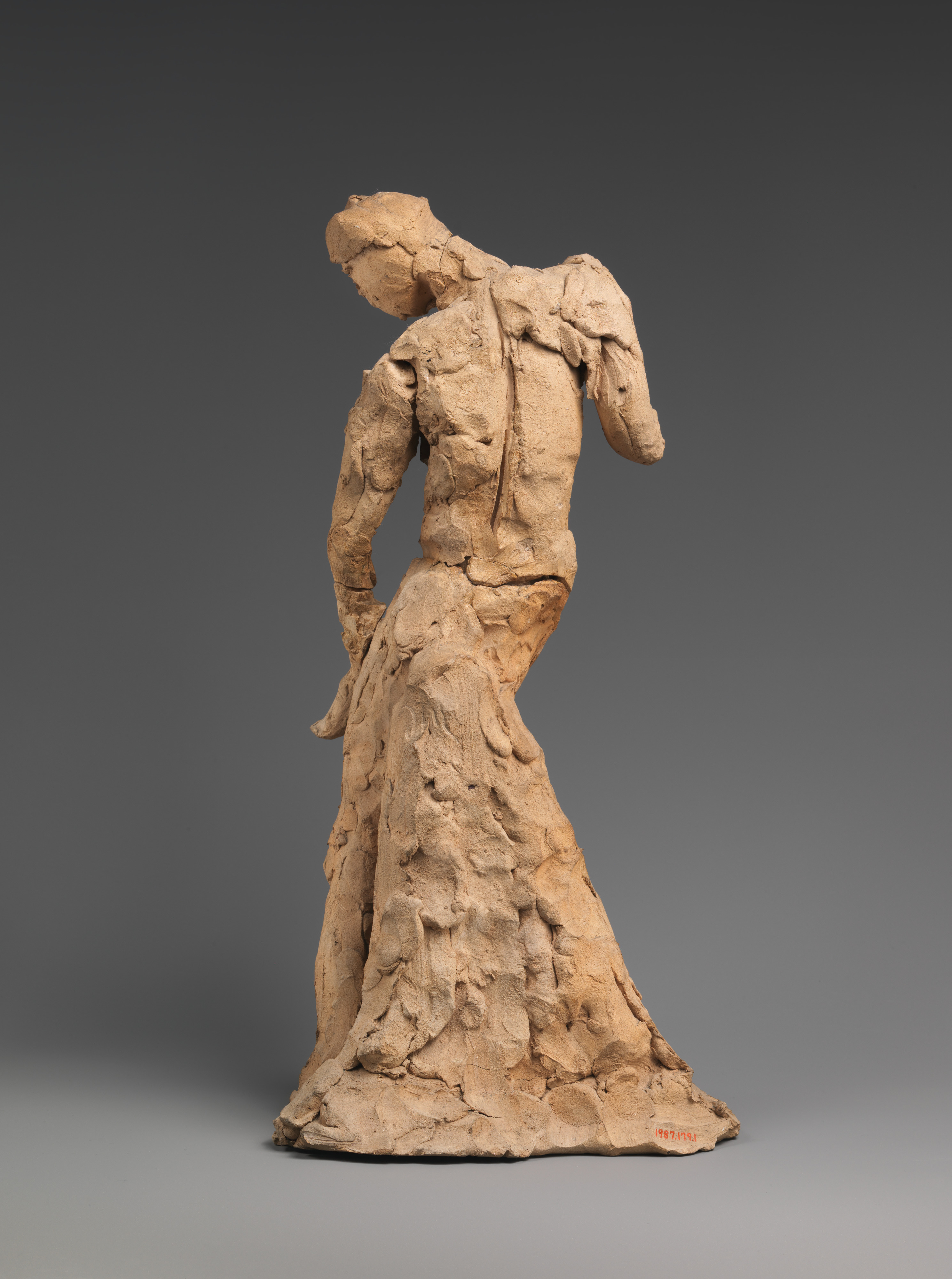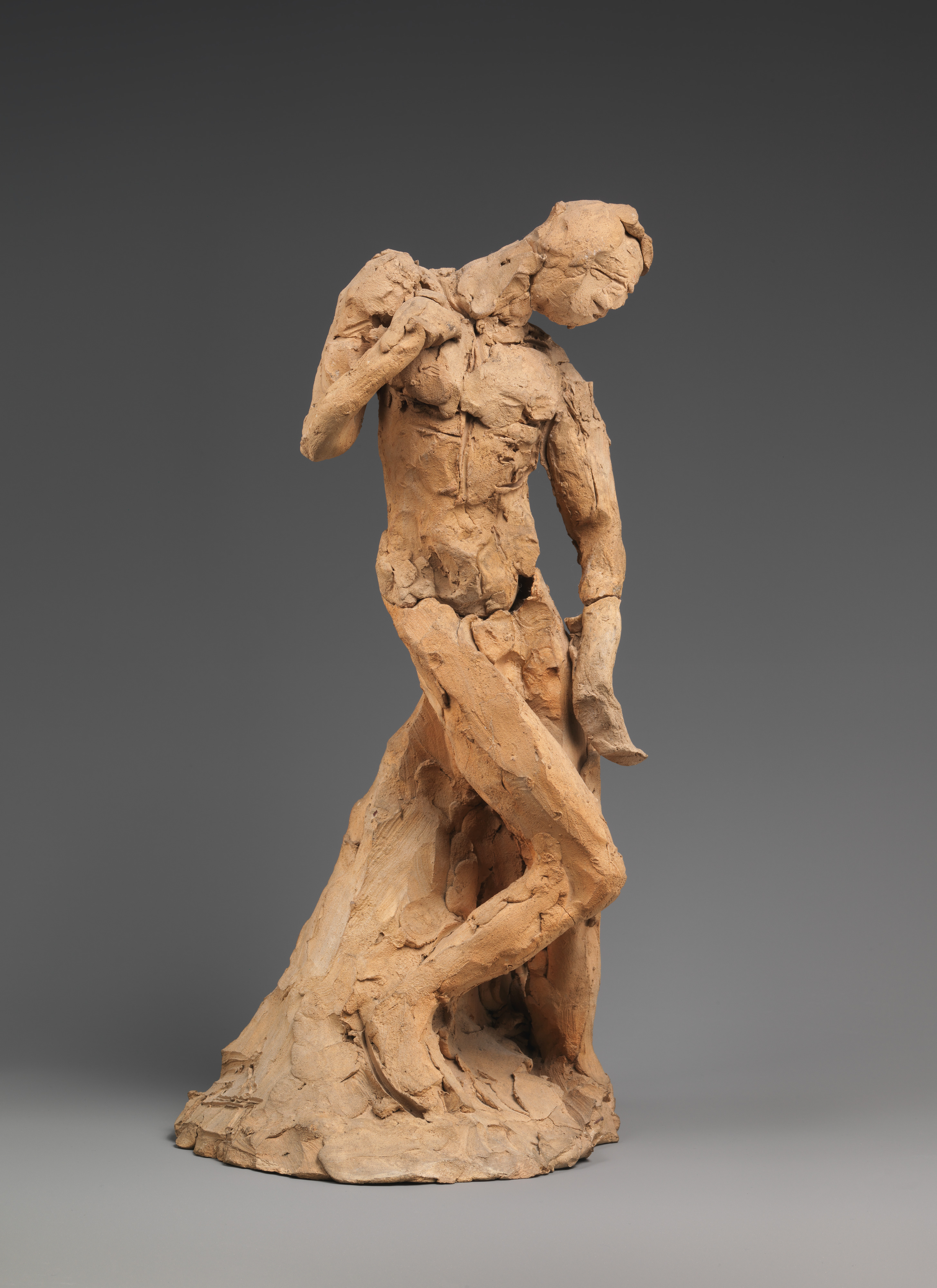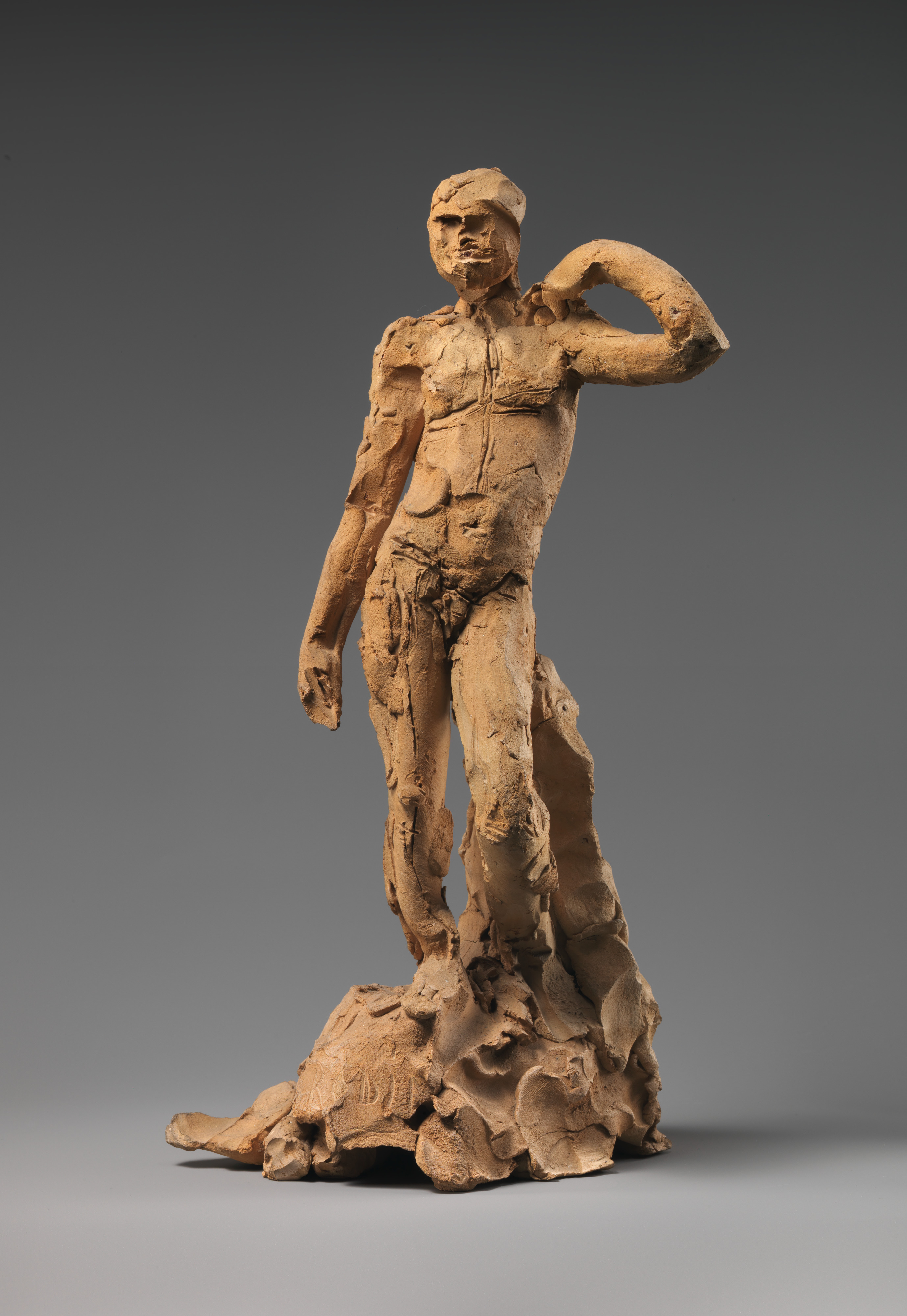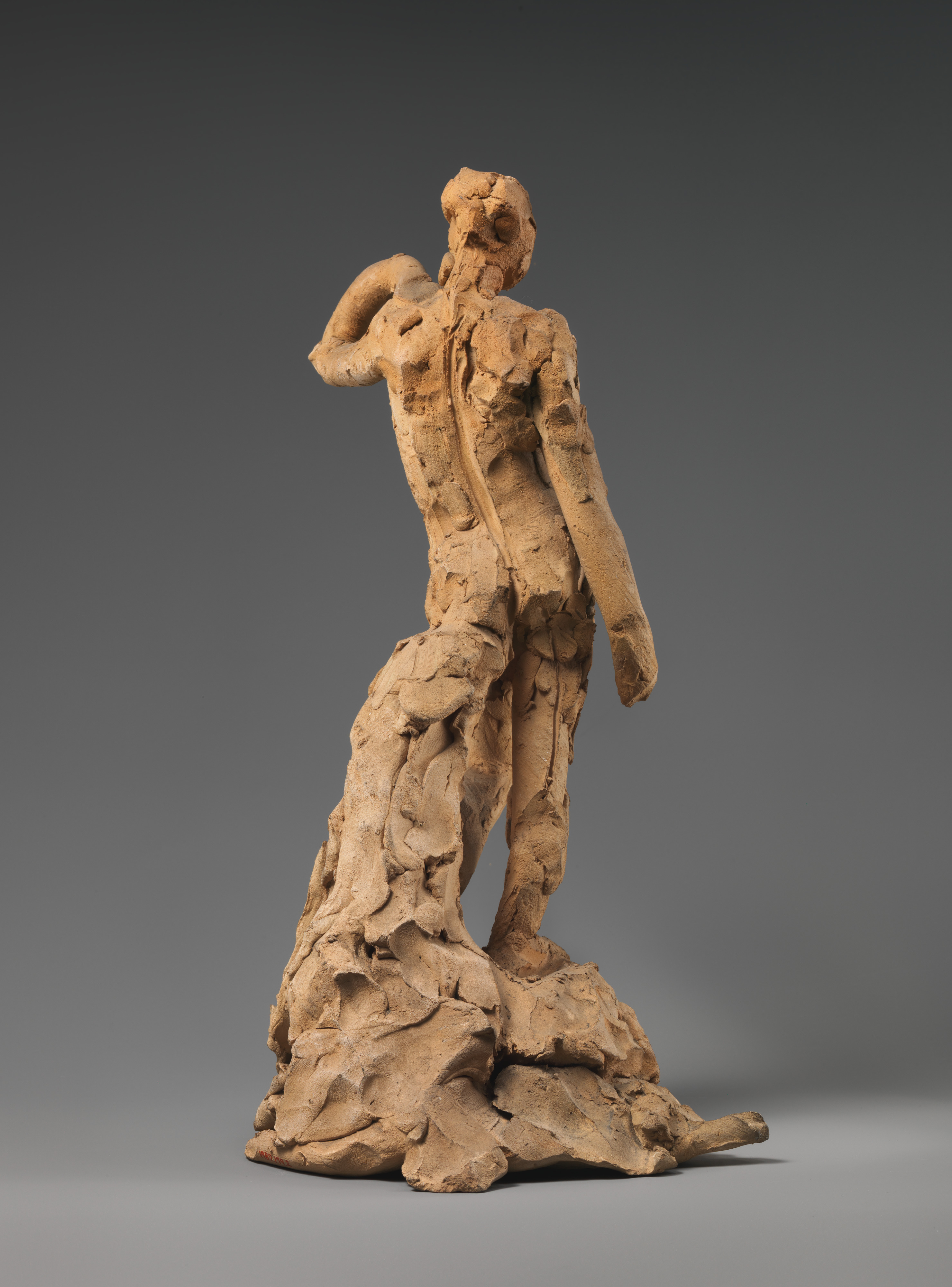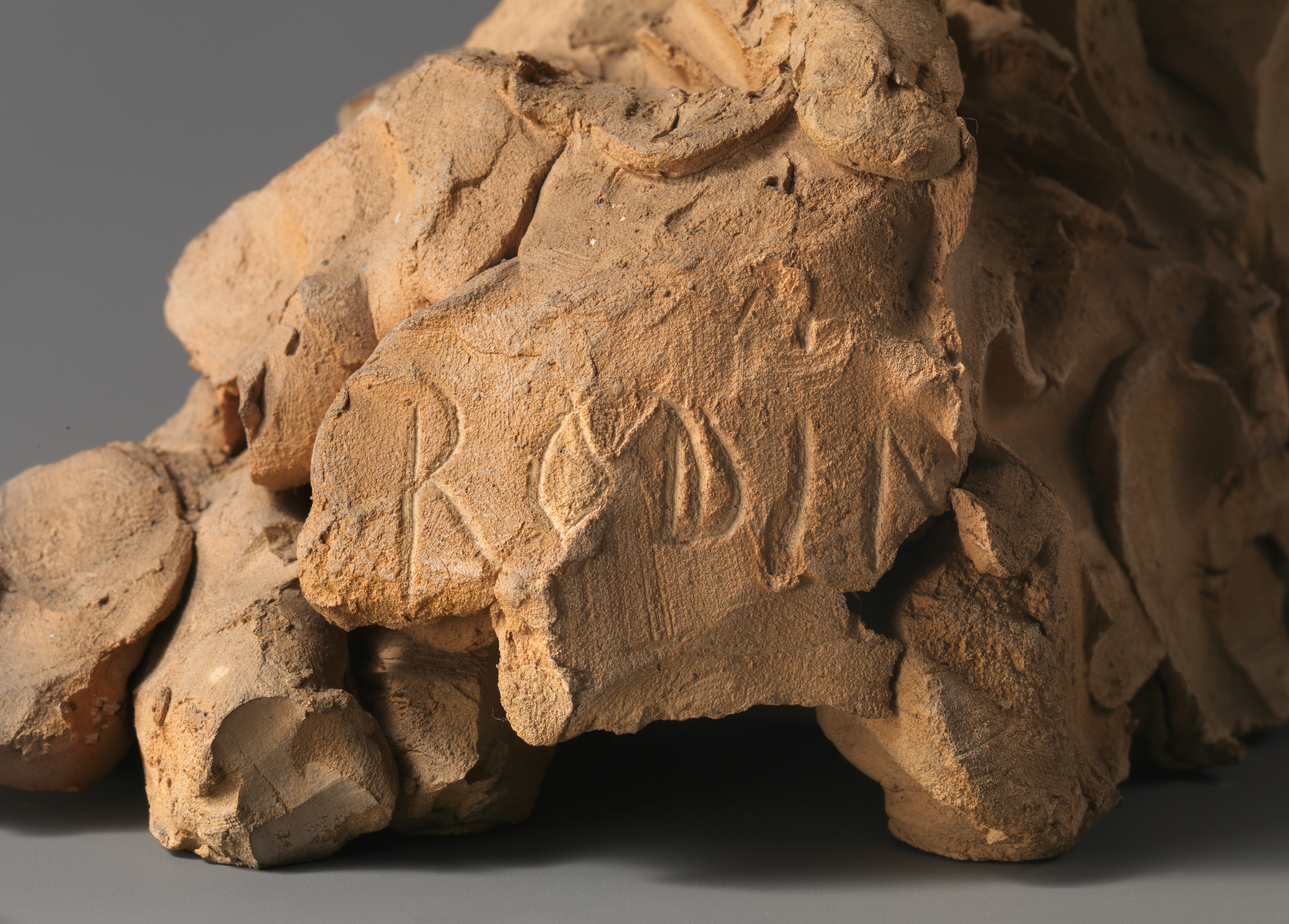Pair of Standing Nude Male Figures Demonstrating the Principles of Contrapposto according to Michelangelo and Phidias
Auguste Rodin French
Rodin modeled these clay sketches as demonstrations of contrapposto—a fundamental pose in which the body responds to bearing its weight on a single leg. Each figure stands in a manner typical of works by the famous sculptor after whom it is named. The version after the ancient Phidias captures the calm physical ease characteristic of classical sculpture. The Michelangelo figure, slumped and twisted inward, expresses the psychological intensity resulting from a more contorted Renaissance contrapposto. In 1911 Rodin presented these sketches to the American sculptor and philanthropist Gertrude Vanderbilt Whitney. Later, the works belonged to the greatest late twentieth-century collectors of Rodin’s sculpture, Iris and B. Gerald Cantor.
Due to rights restrictions, this image cannot be enlarged, viewed at full screen, or downloaded.
This artwork is meant to be viewed from right to left. Scroll left to view more.
